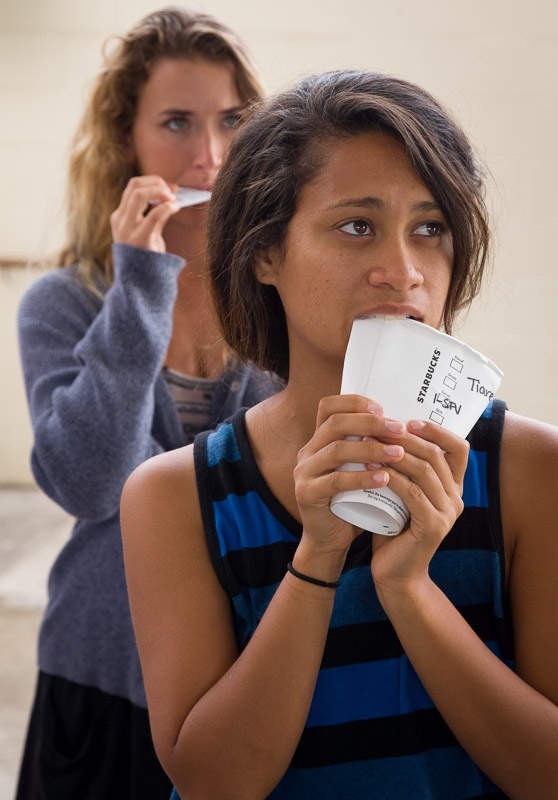 |
| Tiare Nuualiitia (foreground) and Maile Powell listen to some of Stanley’s instructions for lighting project for School of Photography 1 in Kona, Hawaii. Photo by Dennis Fahringer |
Having your work reviewed can be a real nail biter for sure. While I was teaching in Kona, Hawaii Dennis Fahringer took this photo of the students listening to me.
Each one of the students would be talking to me later about how difficult the assignments were, but now on the other side of them are grateful for the assignment.
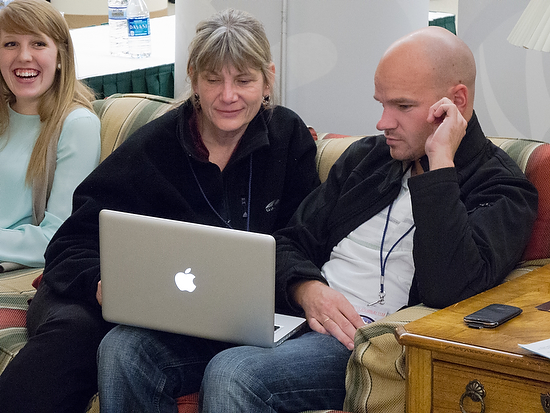 |
| Joanna Pinneo (center) reviews portfolios during the Southwestern Photojournalism Conference |
During the Southwestern Photojournalism Conference students, pros and amateurs all wanted some time to have their work reviewed. Here Joanna Pinneo is reviewing a photographers work.
You can even see in the guys body language how interested he is in her opinion.
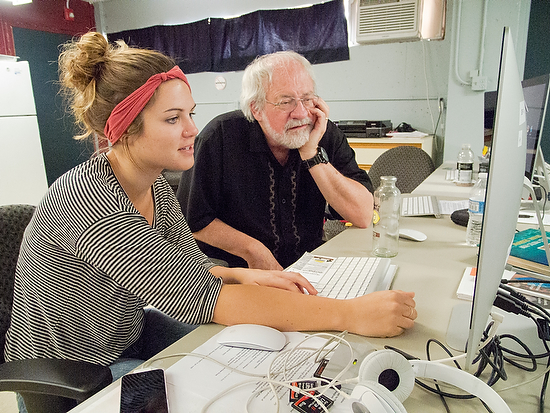 |
| Ayssa Fleming has her work reviewed by Bill Bangham during the School of Photography 1 in Kona, Hawaii. |
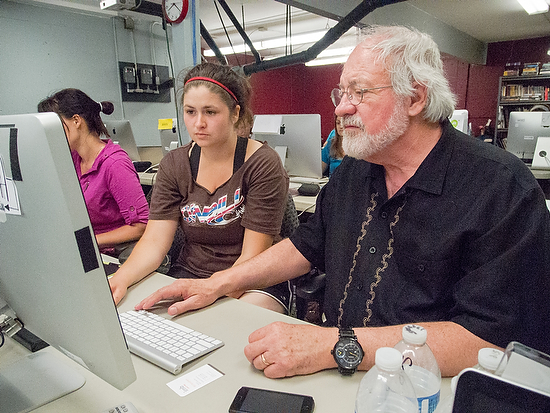 |
| Masha Shulgina has her work reviewed by Bill Bangham during the School of Photography 1 in Kona, Hawaii. |
 |
| Franziska Escher has her work reviewed by Bill Bangham during the School of Photography 1 in Kona, Hawaii. |
Stanley’s Tips for a Portfolio Review
- Let your work speak for itself. Please don’t tell people all about the photos, if the photo doesn’t do a good job of that on it’s own then maybe it shouldn’t be in the portfolio. If the person looking at the photos wants to know more they will ask.
- Listen for what is not said as much as what is said. Often when reviewing a new photographer’s work I am looking desperately for something good in the midst of snapshots. I want to encourage you, but I don’t want you to think everything is great either. If I don’t say anything about a photo, believe me it is because I am not impressed. If you ask me I might try to find something good to say, however, if you are fishing for compliments your work isn’t that good.
- Portfolio review isn’t about praise of your work. If your work is the greatest of all time then maybe you will get a WOW and I wish I had your portfolio comment. You should be looking for pointers on what to do next time to make the photo better.
- Millimeters are critical for great photos. One example of how a millimeter can make or break a photo is just the difference in the camera’s point of view and the subject’s eyes. Just tad bit high and you look down at the subject. Eye level with the subject is something quite different than just a little lower and looking up. As you get better this is what you are looking for the little things to improve your work.
- There are stages of growth in photography. Early in your career you may need some really basic tips to help improve your photography. At this point someone talking to you about a millimeter of difference will not help you. You have a lot of work to do before they can talk to you about those differences.
- Establish a relationship if possible. You need to pick people to review your work that you can go back to later and show them again. They will be able to then see your growth and frankly if you paid attention.
- Ask always if you can follow up and how. Plan to go out and shoot as soon as you can after your review. Work on the tips they pointed out to you and then somehow get them to see your revisions in that portfolio. You might just need to show them one project you are working on and get their feedback.
- You never arrive at the top. There is always room for growth. Always seek out feedback on your work for the rest of your career. If you are not growing then you are dying.
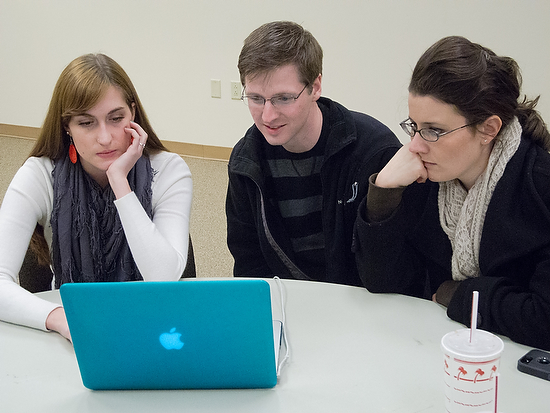 |
| Justin and Ashley Veneman (on right) review a students work during the student workshop at the Southwestern Photojournalism Conference in Fort Worth, TX. |
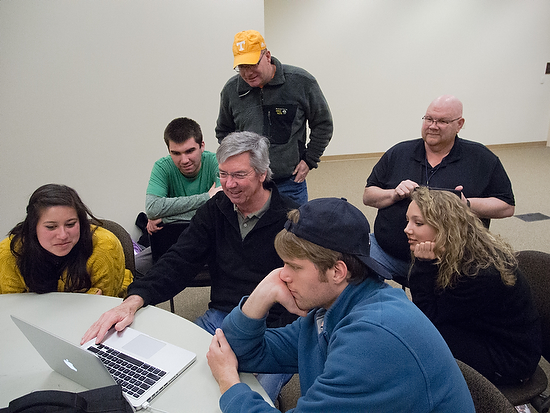 |
| Dave Black, center, reviews a students work while other students look on and learn from the critique. In the back is Patrick Murphy-Racey (Tennessee hat) and Bob Carey who are also leaders in the workshop. |
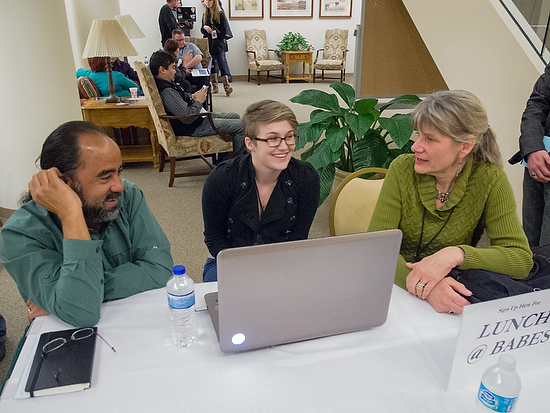 |
| Anacleto Rapping (far left) and Joanna Pinneo (far right) review a student’s work at the workshop. |
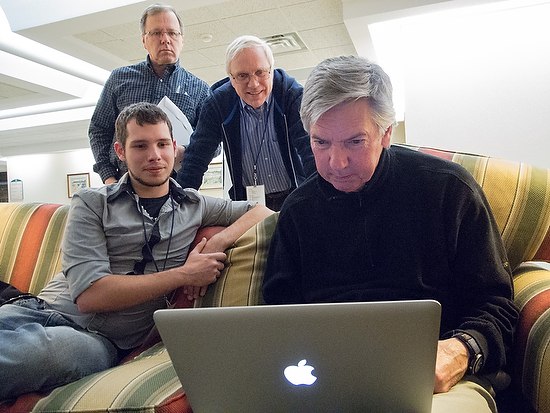 |
| This photo was take around 1:00 am. Dave Black stayed up until 2:00 am critiquing work of anyone who wanted his thoughts during the workshop. |









